This is an image of Jupiter showing the various cloud shapes.
Click on image for full size
NASA
A Look at Jupiter's Clouds
Jupiter shows a pattern of clouds of white, brown, and orange. And then there is the Great Red Spot. The
Great Red Spot is the largest of the clouds of Jupiter. Other cloud shapes include
eddy shapes,
white ovals, brown ovals, and
brown barges. The eddies and white ovals are outlined in this picture, when shown at full size.
These clouds form in stripes and move across the face of Jupiter. The stripes are similar to those found on all the giant planets.
There are three layers of clouds on Jupiter, and each one is composed of different molecules. At one level there are clouds of ammonia, at another level there are clouds made of ammonia and sulfur, and at a third level there are clouds of water (H2O).
Hazes of smog on Jupiter are to be found at very high altitudes above the clouds of Jupiter.
You might also be interested in:
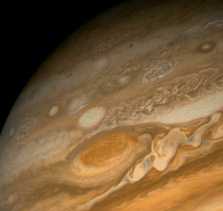
This picture shows the Great Red Spot of Jupiter, in the center of the image. Swirling white clouds below, and to the right of the Great Red Spot, in this picture, are eddys. This image does not have
...more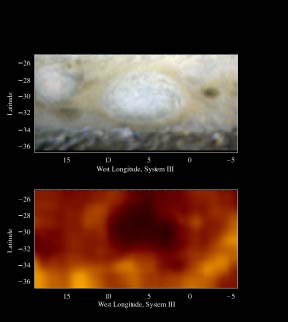
Among the cloud shapes in the atmosphere of Jupiter are white ovals. White ovals are a collection of white clouds which are grouped together into an oval shape. They are found almost anywhere in the atmosphere
...more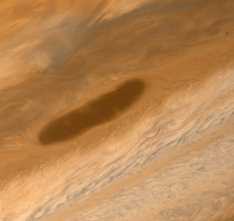
This is a picture of a brown barge. The accompanying clouds, next to the barge, look very similar to earth clouds.
...more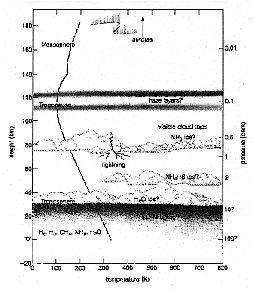
There are three different layer of clouds, or clouddecks, in Jupiter's atmosphere, as shown in this picture. The clouddecks are made of different molecules. The first clouddeck is made of ammonia clouds.
...more
Like sailboats in the ocean, the white ovals seem to drift eastward faster than the underlying current which carries other cloud formations in the South Temperate Zone (STZ). Since their birth , the ovals
...more
Clouds can come in all sizes and shapes, and can form near the ground or high in the atmosphere. Clouds are groups of tiny water droplets or ice crystals in the sky and are formed by different processes.
...more
Motions, or currents in the interior of a gas-giant planet such as Jupiter may be very different from the motions typical of the earth's interior. A second idea for the motions in the interior of a gas-giant
...more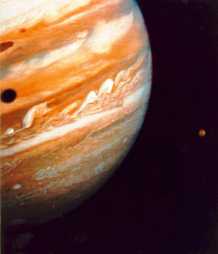
The king of planets is aptly named because it not only has the most dymanic atmospheric motion, but also the most riveting cloud patterns and storms, and the most majestic appearance of the giant planets.
...more















